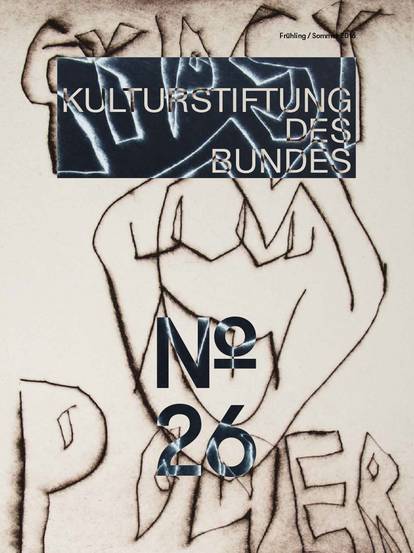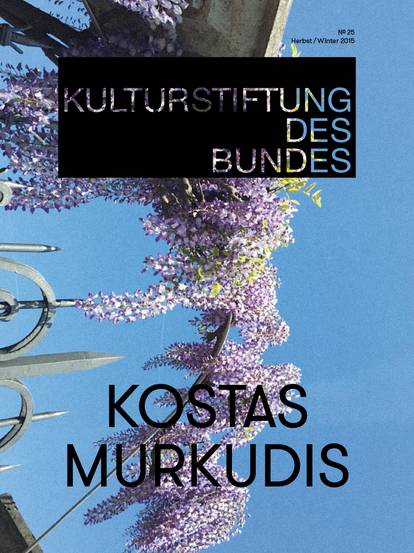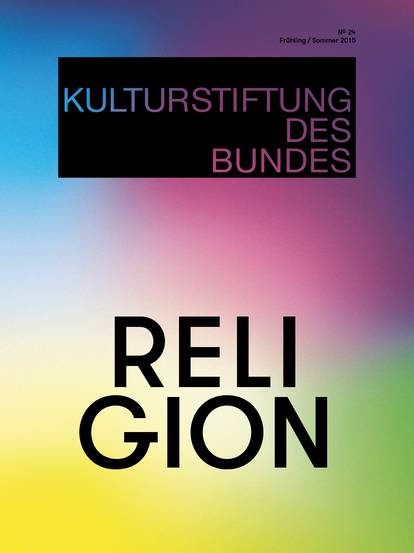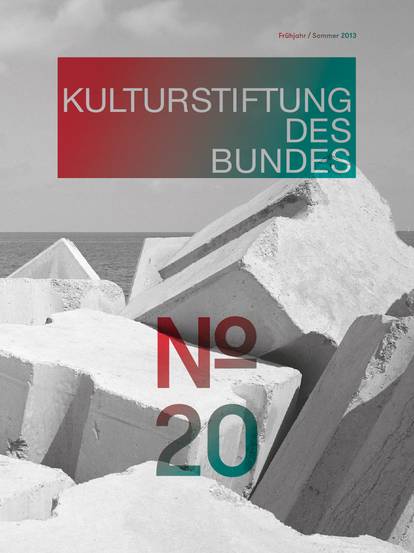RomArchive, the digital archive of the Sinti and Roma, went online in January 2019. André Raatzsch (AR) and Jürgen Keiper (JK) have been involved in the project from the start. Denhart v. Harling (DH) spoke with them about the unique and model-like character of the archive.
DH Why is RomArchive so important as a place where the arts and cultures of the Sinti and Roma are visible?
AR RomArchive is an urgently needed archive of knowledge that confronts and combats an unprecedented surge in antiziganism. For the minority, this archive symbolises the appreciation of its culture in Germany and in all of Europe, and indeed worldwide. In light of the government’s recognition in 1982 of the Nazi genocide of 500,000 European Sinti and Roma, the creation of the archive marks a milestone of awareness in Germany. In terms of cultural participation, RomArchive will hopefully contribute to anchoring the century-old history of the Sinti and Roma in school materials and curricula. The archive is a good example of how important it is for members of the minority to become involved in the cultural-political institutions of the majority society.
DH RomArchive is an exclusively digital archive. What can digital archives do better than analogue archives?
JK Basically the main advantages of a digital archive lie in how simple it is to access the collection, to index and search for the respective objects, and of course, the possibility of making these objects available to users worldwide. The big advantage of digital objects is that they are conceptually archivable forever, which is certainly not the case for analogue materials. Naturally, this presents the challenge of conducting professional archiving in the long term. What’s more, the entire field of historical and cultural preservation is absolutely fractured. There are libraries, archives, museums, galleries and so on. A digital archive with its specific presentation possibilities can surmount the constraints faced by such institutions much easier. And although the trend is not yet fully in swing, there’s the whole area of the “semantic web” which fast approaching. This means that someday we’ll be able to interlink resources from archives all around the world.
DH What does it mean to “digitalise culture”? Is it possible to evaluate it?
JK When the first digital reproductions appeared, many were deeply concerned the original would lose its value. Interestingly, people continue to visit art exhibitions as often before. This is a good example of the dialectics of digital processes. On one hand, there’s a democratisation of the object thanks to better accessibility and wider dissemination, and on the other, there is still the wish to see and experience the original. An important criticism of digital databases is that they suck up all the objects of the world, display them side by side, categorise them according to the same criteria, and so doing, grant them equal significance. There is certainly some truth to this, but on the other hand, it naturally depends on what we do with these databases. This was an extremely important aspect of our project, and we developed several approaches to address this. The objects are not simply displayed one after the other like in a gallery. Rather, we’ve developed specific, differentiated concepts in the presentation, for example, using storytelling, contextualisation, deconstruction etc. The challenge of using the database as an apparatus was to generate new narratives that break the fixed structures.
DH In many respects, RomArchive is a pioneering project. It was ground-breaking both in terms of the technological requirements and the conceptualisation of the content. What would you say are the project’s greatest accomplishments?
JK A great approach that addressed the current debates on how to respond to antiziganist, racist and generally problematic representations was an idea by the agencies bildargumente and Open Video which established contextualisation. The aim of the so-called “item bundles” was to never present a single object detached from its context. What I also found extremely important was the concept of storytelling which ruptures the classical temporal structure of reception. You can read the texts from start to finish, but you always have the possibility to click on the names of other people or other objects to read their narratives. Following your interests, losing yourself in the subject matter – for me that gives the project an extraordinary quality. There are no predetermined paths, but they’re not entirely random either.
AR In my view, the greatest achievement of RomArchive was having so many curators, many of whom belong to the minority themselves, oversee the thematic and conceptual structures of the various sections of the archive. Unfortunately, by no means is it self-evident that Sinti and Roma would be allowed to fill all the influential and decision-making positions in such a project. During the course of the project, at our advisory council and curatorial meetings, we would always discuss cultural political aspects and necessities. All the participants were keenly aware of the challenge that RomArchive would have to break with long-held traditions of ethnicising and racialising archival and presentation practices. My objective from the start was to critically review how the arts and cultures of the Sinti and Roma have been gathered and presented in the past so as to avoid creating another “presentation of the minority” based on conventional and traditional notions.
DH What other concrete obstacles did the RomArchive project have to overcome?
AR Another big question, of course, was what to do with those materials that depicted members of the minority in a stereotypical or even racist light – such as photos, films, paintings, press reports and historical documents. I always believed that even these problematic portrayals should be included in the archive, but not shown without contextualisation. I wanted to use filters, look for methods to control and influence their reception so that viewing these pictures wouldn’t rekindle antiziganist sentiments. In Susan Sonntag’s book On Photography, she suggests that one could wield such control by presenting photos in film format. In this way, the director can determine how long the recipient can view the photos, and which photos and details are shown. In our short film Reading Photography we actively shift the viewer’s attention, for example, by blocking out a projected image with a hand or emphasising certain areas, and having a voice-over critically place it in a socially historic context. Another focus of discussion – this time among the curators – was the challenge of how to present European Sinti and Roma to a broad international audience so that it was easily understandable but also adequately portrayed their complex cultural contexts. This project saw many different cultural identities collide with one another. For example, the dance curator Isaac Blake described himself with the words “I am a gipsy”. But we’ve been trying to avoid using the English term “gipsy” because of its negative connotations here in Germany and many parts of Europe. But this is how Roma and Travellers in Great Britain commonly describe themselves – something I didn’t know despite being a member of the Sinti and Roma in Germany myself. For some members of the minority, headscarves and skirts are normal clothing and don’t evoke antiziganist images. Filtering, critically examining and analysing all of this was extremely difficult.
JK The project took the multitude of voices into account in two places of the concept. The first was assigning individual curators to specific areas which allowed us to incorporate a polyphony of concepts, approaches, positions. And the second came after developing a glossary of keywords and catchphrases with explanations. After some people raised objections to these and insisted on different phrasing, we added a second explanation. It’s not about defining a single truth, rather there are several equally valid positions. This approach to a polyphony of voices is a very positive element of the entire project.
DH What kind of difficulties did you run into specifically with respect to digitalisation?
JK Throughout the entire process of building the archive, I think the hardest or most problematic part was classifying the content, assigning the keywords. It’s always a matter of reduction when assigning keywords, reducing a complex down to a single term. And not everything in the archive is text-based, we often deal with images and films, as well. That’s when much more abstract categories come into play. How do you interpret a picture, how do you describe a photo with one word? It has a lot to do with individual preferences, and that’s what makes it very difficult. The terms themselves also have a temporal and social dimension; the word we’d assign to an object today might have been completely different 30 years ago or in a different geographical region.
AR That’s true, these terms have to be very deliberately assigned in closed archival systems. In the archive of the Arab Image Foundation, the famous project by Akram Zaatari and others, I once tried to search for the term “scarf”. My query came up with very different images: one of Yasser Arafat wearing a Palestinian scarf, a picture of a woman with a shawl, and another of a dog donning a neckerchief. Suddenly the concept of a democratic archive actually lived up to its name. Given different keywords and contexts, the same images would have been perceived very differently.
JK Another challenge was the digitalisation itself. Throughout our discussions, we learned that the pieces we had in mind were not located at museums but were often owned by private individuals. And that’s why the area of preservation became more and more important. We all know that things simply break, and how age and environmental conditions gradually destroy them. And for this reason, we also wanted to use this project to create the conditions for preserving such artefacts in the long term. But even though the archive contains outstanding digitalised renderings of countless items, there are naturally some that cannot be so easily “preserved” in this way.
DH Many archives which are now in the process of being built contact RomArchive to inquire about its collection policy and ethical guidelines, which they then adopt or adapt themselves. It seems RomArchive has truly done some pioneering work.
AR Yes, the ethical guidelines and the collection policy which were the subject of discussion for two years in the advisory council and among the curators and project managers, were enormously important for a democratic archival process which guarantees the human dignity of those depicted. In practice, we quickly discovered that members of the minority – myself included as a curator – harbour reservations and fears regarding certain concepts of documenting and collecting photos, names and stories. The cause for this can be traced by to the wounds of Nazi persecution which have never fully healed. The Nazis collected information about our ancestors in archives and databases which were used against them for eventual incarceration, deportation or murder. So it’s clearly understandable that the term “archive” itself evokes a negative connotation among many of our people. RomArchive cannot remove the pain caused by the Nazi genocide, that’s impossible, but our job is to offer our children new hope and new paths. When I look at the ethical guidelines and collection policy today, I feel a great sense of relief. Never before had such policies been instituted for our minority, and that’s why I’m very happy that other archives are adopting them as the basis of their operations as well.
Note: You can access the AR content of this article via the issuu-paper of this magazine. (external link, opens in a new window)

![[Translate to English:] Magazine 38](/fileadmin/_processed_/f/1/csm_Magazin38_Cover-Vorschau_921x1230_689f428dc3.jpg)
![[Translate to English:] Magazine 37](/fileadmin/_processed_/b/c/csm_Mag37_Cover-Vorschau_921x1230_b5129fdb2a.jpg)
![[Translate to English:] Magazine 36](/fileadmin/_processed_/2/a/csm_Cover_Magazin36__issuu_2f3cef97bb.jpg)





![[Translate to English:] Magazine 30](/fileadmin/_processed_/c/b/csm_magazin30_vorschau_9005f773d3.jpg)














